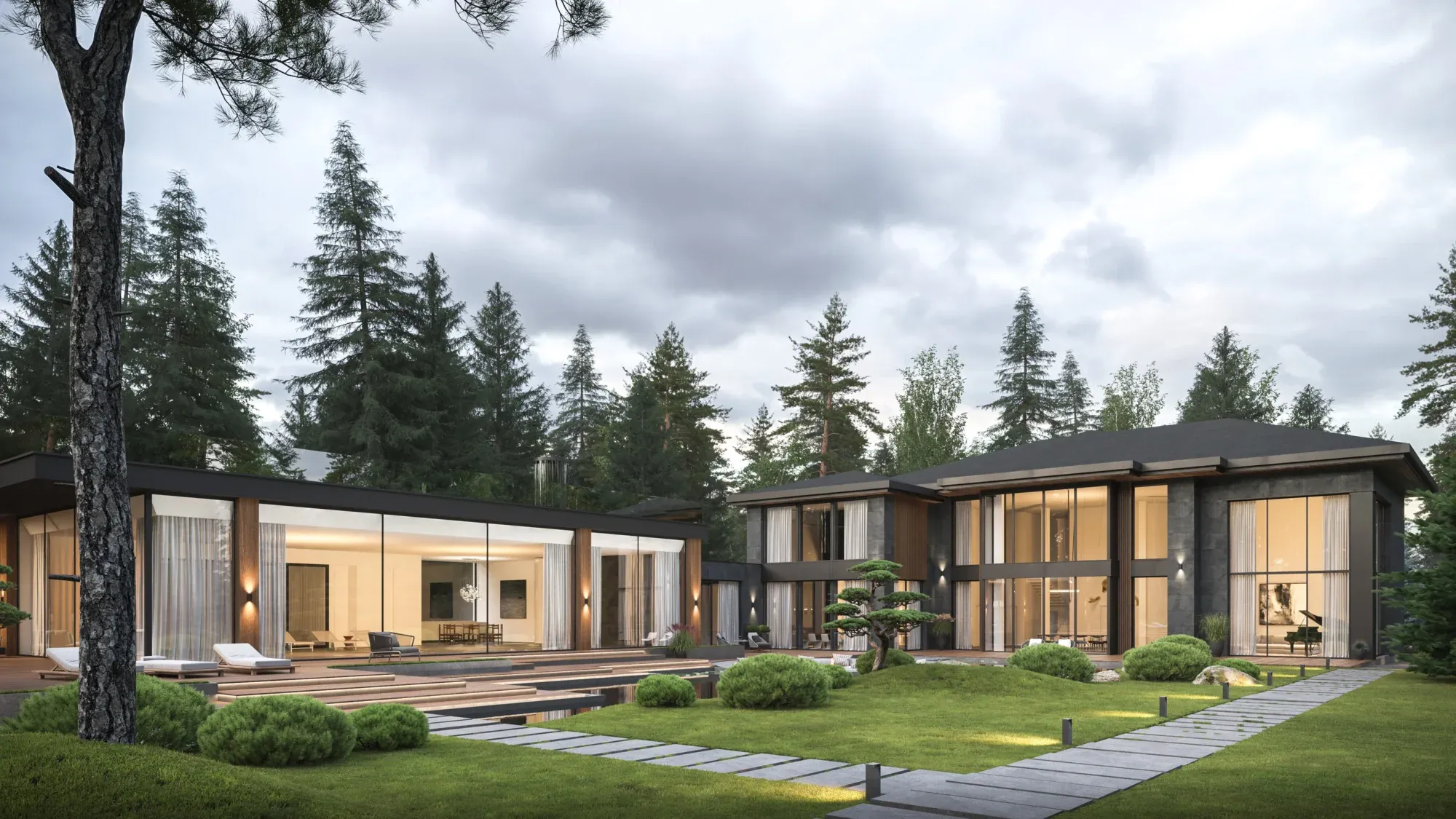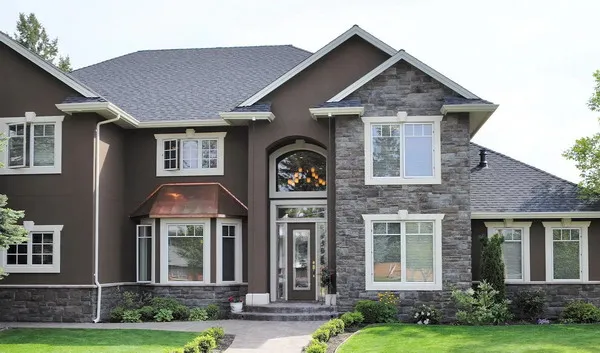Sustainable Outdoor Design Trends for 2025
Last Updated on February 25, 2024 by Mutiara
In the realm of outdoor design, sustainability is no longer just a trend but a guiding principle driving innovation and creativity. Sustainability is becoming increasingly intertwined with the principles of biophilia and regenerative living. The outdoor space of a home has emerged as a pivotal arena for eco-conscious innovation. As we venture into 2025, a shift towards eco-conscious practices is reshaping the way we conceptualize and create outdoor spaces. Let’s explore some of the key trends defining sustainable outdoor design trends 2025.
1. Eco-Friendly Landscaping
Gone are the days of high-maintenance lawns and water-intensive gardens. In 2025, eco-friendly landscaping takes center stage, emphasizing practices that minimize environmental impact while maximizing beauty and functionality. This approach involves selecting native plants, implementing water-efficient irrigation systems, and using organic fertilizers to create resilient and sustainable outdoor environments.
2. Green Outdoor Spaces
Embracing the concept of “green” outdoor spaces goes beyond just adding plants—it’s about creating living, breathing ecosystems that support biodiversity and promote environmental health. From rooftop gardens and vertical green walls to rain gardens and bioswales, green outdoor spaces harness the power of nature to improve air quality, mitigate urban heat island effects, and provide habitat for wildlife.
3. Sustainable Garden Design
Sustainable garden design is all about working in harmony with nature to create beautiful and functional outdoor spaces that are resilient and low-maintenance. This approach involves incorporating permaculture principles, using regenerative gardening techniques, and prioritizing soil health to create self-sustaining ecosystems that require minimal inputs of water, energy, and resources.
4. Environmentally Conscious Exteriors
The exterior of a home is not just about aesthetics—it’s an opportunity to make a positive impact on the environment. Environmentally conscious exteriors focus on reducing carbon footprint, minimizing waste, and conserving resources through thoughtful design choices and sustainable materials. From energy-efficient lighting to recycled building materials, every aspect of the outdoor environment is considered with sustainability in mind.
5. Low-Impact Outdoor Living
Creating outdoor living spaces that tread lightly on the planet is a key focus of sustainable design in 2025. This involves choosing low-impact materials such as responsibly sourced wood, reclaimed stone, and recycled composite decking. Additionally, incorporating features like rainwater harvesting systems, solar-powered outdoor lighting, and permeable paving helps minimize environmental impact while maximizing the enjoyment of outdoor living.
6. Biophilic Design Principles
Biophilic design seeks to reconnect humans with nature by incorporating natural elements, patterns, and processes into the built environment. In 2025, this approach is gaining momentum in outdoor design, with an emphasis on creating spaces that foster a deep connection to the natural world. From incorporating natural materials and textures to designing spaces that evoke the sights, sounds, and scents of nature, biophilic design principles enhance well-being and promote environmental stewardship.
7. Regenerative Outdoor Environments
Going beyond sustainability, regenerative outdoor environments aim to restore and enhance ecological systems while simultaneously meeting human needs. This holistic approach involves designing landscapes that mimic natural ecosystems, promote soil health, and support biodiversity. By harnessing the power of regenerative practices such as permaculture, agroforestry, and organic gardening, outdoor spaces can become thriving hubs of life that regenerate and replenish the Earth.
8. Permaculture Landscaping
Permaculture landscaping embodies the principles of sustainability, resilience, and self-sufficiency, drawing inspiration from natural ecosystems to design productive and harmonious outdoor spaces. In 2025, permaculture principles are being applied to create landscapes that not only provide food, water, and shelter for humans but also support healthy soil, clean water, and diverse habitats for wildlife. By mimicking the patterns and processes of nature, permaculture landscaping offers a regenerative approach to outdoor design that fosters ecological health and abundance.
9. Carbon-Neutral Outdoor Spaces
In response to the climate crisis, carbon-neutral outdoor spaces are emerging as a key focus of sustainable design in 2025. This involves reducing greenhouse gas emissions associated with outdoor activities, materials, and maintenance practices to achieve a net-zero carbon footprint. Strategies such as planting trees for carbon sequestration, using renewable energy sources, and choosing low-carbon materials help mitigate the environmental impact of outdoor spaces, contributing to global efforts to combat climate change.
10. Renewable Materials in Landscaping
Choosing renewable materials is a cornerstone of sustainable outdoor design in 2025, as homeowners seek alternatives to traditional, resource-intensive materials. From reclaimed wood and recycled plastic lumber to permeable pavers made from recycled materials, there is a growing emphasis on selecting materials that are durable, low-maintenance, and environmentally friendly. By prioritizing renewable materials in landscaping, outdoor spaces can be both beautiful and sustainable, with minimal impact on the planet.
11. Water-Wise Garden Design
Water scarcity is a pressing concern in many regions, making water-wise garden design a top priority in 2025. This trend emphasizes the use of drought-tolerant plants, rainwater harvesting systems, and efficient irrigation techniques to minimize water consumption and promote water conservation. By designing landscapes that require minimal irrigation and maximize rainwater capture, homeowners can create lush and vibrant outdoor spaces while reducing their environmental footprint.
12. Native Plant Landscaping
Native plant landscaping is gaining popularity as homeowners recognize the benefits of using plants that are adapted to the local climate and soil conditions. In 2025, this trend continues to thrive, with an emphasis on selecting native species that support local ecosystems and require minimal maintenance. By incorporating native plants into outdoor spaces, homeowners can attract pollinators, conserve water, and create habitats for wildlife, all while celebrating the natural beauty of their region.
13. Energy-Efficient Outdoor Lighting
Energy-efficient outdoor lighting is a key focus of sustainable design in 2025, as homeowners seek to reduce energy consumption and minimize light pollution. LED lighting fixtures, solar-powered lights, and motion sensors are increasingly being used to illuminate outdoor spaces while minimizing electricity usage and operating costs. By choosing energy-efficient lighting options, homeowners can enhance the safety and functionality of their outdoor areas while reducing their environmental impact.
14. Recycled and Upcycled Outdoor Furniture
In a move towards circular design principles, recycled and upcycled outdoor furniture is becoming increasingly popular in 2025. This trend involves repurposing materials such as reclaimed wood, recycled plastic, and salvaged metal to create stylish and durable outdoor furnishings. By giving new life to old materials, homeowners can reduce waste, conserve resources, and create unique outdoor spaces that reflect their commitment to sustainability.
15. Wildlife-Friendly Garden Design
Creating outdoor spaces that support biodiversity and provide habitat for wildlife is a key trend in sustainable design for 2025. This involves incorporating features such as native plants, bird feeders, butterfly gardens, and bee hotels to attract and support a diverse range of species. By designing landscapes that prioritize the needs of wildlife, homeowners can contribute to conservation efforts and create thriving ecosystems right in their own backyard.
Sustainable outdoor design trends of 2025 reflect a growing awareness of the importance of environmental stewardship and a desire to create outdoor spaces that are both beautiful and eco-friendly. By embracing water-wise garden design, native plant landscaping, energy-efficient lighting, recycled furniture, and wildlife-friendly habitats, homeowners can create outdoor environments that promote sustainability, biodiversity, and well-being for both people and the planet. As we continue to prioritize eco-conscious living, these trends offer inspiration and guidance for creating outdoor spaces that nurture nature and enhance quality of life for generations to come.










